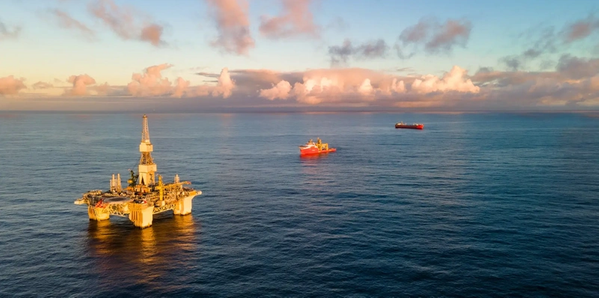
Production from the Njord field in the Norwegian Sea restarted at 16.30 on December 27th, following an upgrade project in which both the platform and the floating storage and offloading vessel (FSO) were brought ashore for extensive upgrades.
Geir Tungesvik, Equinor's executive vice president for Projects, Drilling & Procurement said: "This is the first time a platform and a FSO have been disconnected from the field, upgraded, and towed back, and we have now doubled the field’s life.It has been a big and challenging job, partly performed during a pandemic, and I want to thank everyone who has contributed. The Njord field will now deliver important volumes to the market for another two decades.
When they were first put into use in 1997, the Njord installations were meant to run until 2013. However, with large volumes still left in the ground, and with discoveries in the vicinity of the offshore facilities nearby, such as Hyme which came into operation in 2013, and others that can be produced and exported via Njord, the partners decided to extend the life of the offshore facilities.
The platform and FSO were brought ashore in 2016 after 19 years of production. The Njord A platform was upgraded at Stord, where it was constructed in the 90s. The Njord Bravo FSO was inspected prior to upgrade and prepared for tow-out in Kristiansund, and the refurbishment was carried out in Haugesund.
250 million barrels
“Our ambition is to produce about the same volume from Njord and Hyme as we have produced so far, more than 250 million barrels of oil equivalent," says Kjetil Hove, Equinor's executive vice president for Exploration & Production Norway.
Equinor said that ten new wells would be drilled at Njord from an upgraded drilling facility. Also new discoveries have been made at the outer edges of Njord, and more exploration will be carried out in the surrounding area.
Also, the platform and FSO have been set up to receive production from two new subsea fields, Bauge and Fenja, which have a total of 110 million barrels of recoverable resources.
“This is illustrative of our strategic work on the NCS to extend the fields’ productive life and tying back new discoveries to existing infrastructure, while reducing the climate footprint from the production," says Hove.
Power from shore
According to plans, the Njord field will, in a few years, receive power from shore via the Draugen platform in the Norwegian Sea and be partially electrified. This will reduce the annual CO2 emissions by about 130,000 tonnes.
Production from the Njord field was initially supposed to resume two years ago. However, the upgrade project has been more challenging than expected, and the project was hard hit by the Covid-19 pandemic, Equinor explained.
"This has also put an upward pressure on costs. Capital expenditures total just over NOK 31 billion (2022), compared with the original NOK 17 billion in the plan for development and operation.However, the project is profitable with oil prices far lower than today," Equinor said.
The Njord license partners are Wintershall Dea Norge AS (50 percent), Equinor Energy AS (27.5 percent, operator) and Neptune Energy Norge AS (22.5 percent).
Njord is located in the Norwegian Sea, 30 kilometers west of Draugen, and 130 kilometers northwest of Kristiansund. The water depth is 330 meters.



